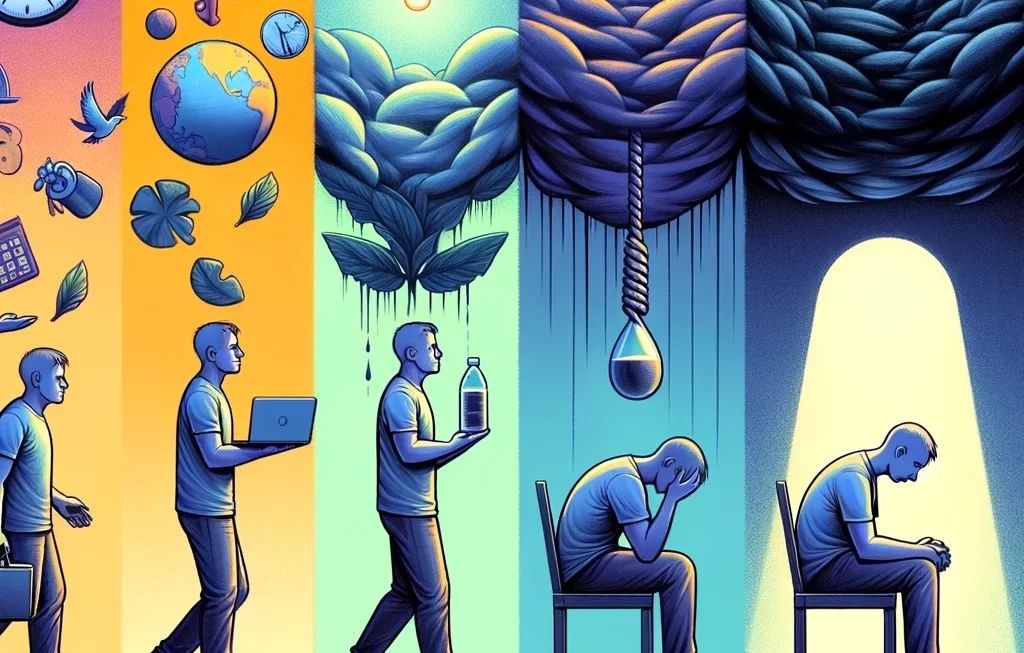In today’s conversations, depression has unfortunately become a term often casually overused to describe brief moments of stress or sadness. This trend, while reflecting a growing awareness of mental health, might inadvertently diminish the profound seriousness of clinical depression. It is crucial to distinguish the everyday stress and the profound, often debilitating condition known as major depressive disorder.
From Stress to Clinical Depression: A Spectrum of Experience
Stress, an unavoidable part of life, serves as an initial trigger on the path that can lead toward depression. It is the body’s natural reaction to demands or challenges, typically short-lived and resolved once the stressor is removed. However, when stress becomes persistent, it can evolve into anxiety—a more enduring state of worry or fear, even in the absence of immediate threats.
Anxiety, while distressing, is still distinct from depression. The transition to clinical depression occurs when feelings of anxiety or sadness intensify and last long enough to significantly impair one’s ability to function. This highlights an important nuance: while stress and anxiety are universal experiences, not everyone will develop depression.
The Depth of Depression: A Closer Examination
Clinical depression, or major depressive disorder, is a mental health condition characterized by an overwhelming sense of despair, emptiness, or hopelessness. It involves significant changes in brain chemistry, function, and structure, profoundly affecting one’s thoughts, feelings, and behaviors. Symptoms can range from profound sadness to a complete lack of interest in activities once enjoyed, significant changes in weight or appetite, sleep disturbances, fatigue, feelings of worthlessness, difficulty concentrating, and recurring thoughts of death or suicide.
Neurological and Biopsychological Insights into Depression
Advances in neuroscience have illuminated the significant brain changes associated with depression, including alterations in brain structure and function, particularly in areas related to mood regulation like the prefrontal cortex, amygdala, and hippocampus. The condition also affects the brain’s plasticity, reducing its ability to form new connections and adapt to experiences.
Depression’s biopsychological perspective emphasizes the interaction between genetic, biological, environmental, and psychological factors. This complex interplay includes neurotransmitter imbalances, genetic predispositions, environmental stressors, inflammation, and hormonal changes in its development and persistence.
The Journey to Hope: Confronting the Stigma of Depression
The casual misuse of “depression” contributes to a stigma, deterring those affected from seeking help. Recognizing the difference between transient stress and clinical depression is vital in ensuring that individuals receive the understanding and support they need. Treatment involves a combination of psychotherapy, medications, lifestyle adjustments, and support groups, underscoring the importance of early intervention.
Towards a More Compassionate Understanding
Our exploration of depression—from its initial triggers of stress and anxiety to its neurological and biopsychological foundations—underscores the condition’s complexity. It urges us to use our words with care and offer support, fostering an environment where mental health is taken seriously and individuals feel empowered to seek help. By deepening our understanding of depression, we can better support those around us, contributing to a community that values mental health as a fundamental aspect of overall well-being. This article calls for a renewed commitment to understanding depression not as a mere inconvenience but as a serious health condition, deserving of our empathy, respect, and concerted efforts for effective intervention.




